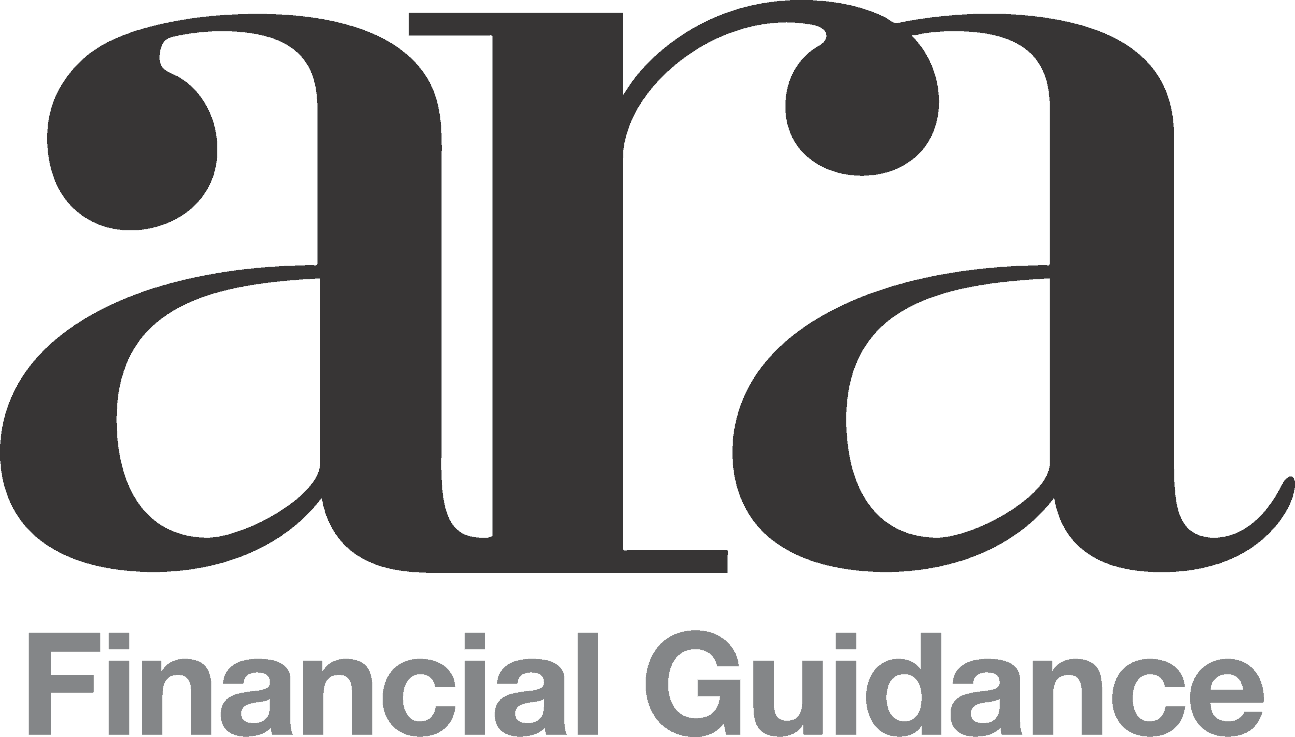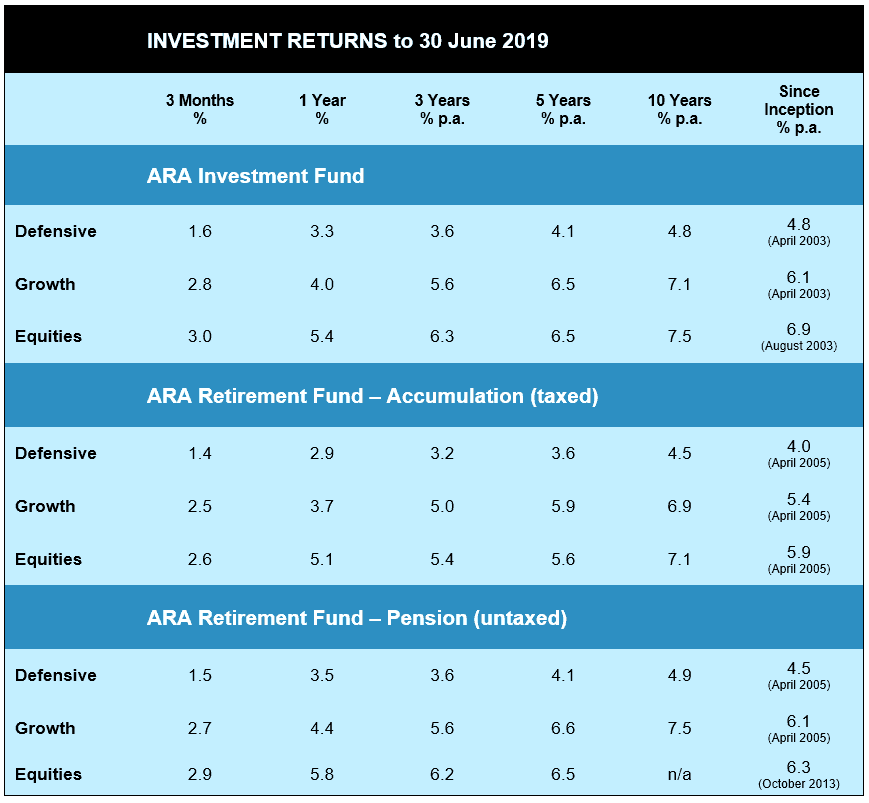

Not unusually it was a challenging year in investment circles. A year of two distinct halves.
You may recall from the December newsletter that we’d just experienced substantial falls in Australian and International stocks. As it turned out, they recovered just as quickly to end up posting quite solid gains for the full year, but it was quite a ride to get there.
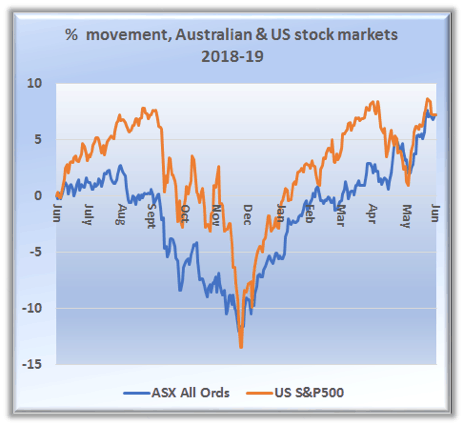
At an individual asset level there were, again not unusually, wins and losses. We had a very successful exit from the ProTen poultry farming investment, one of the largest investments we’ve made. And among our largest listed share holdings, Nearmap continued on its way, up a staggering 335% for the year.
A newcomer to the portfolio was the Betashares Australian Sustainability Leaders ETF.

This listed fund provides exposure to a portfolio of Australian companies that have been screened to favour those engaged in sustainable business activities and to avoid companies involved in activities deemed inconsistent with responsible investment considerations. In keeping with the ESG (Environmental, Social and Governance) policy that we are progressively introducing across our portfolios we started buying this fund in January and happily it’s up 16% since then. Welcome aboard.
By the way if you’d like more information on our ESG policy give us a call or have a look on our website.
So notwithstanding the volatility in listed markets and the now well-documented Condor writedown, the year’s performance was at or around target. And certainly all portfolios remain ahead of target in the longer terms against which they are meant to be measured (three years plus for Defensive, five years plus for Growth and Equities).
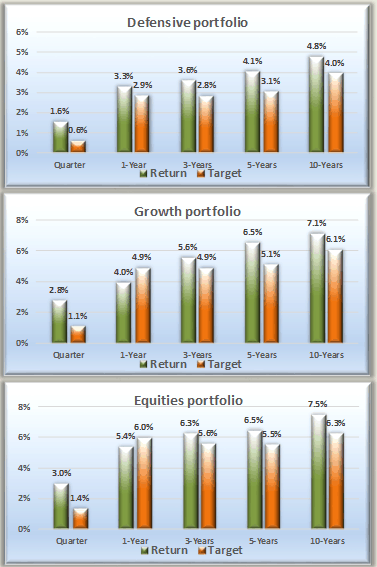
Cash and interest rates
There are a couple of points that need to be made in respect of interest rates, which have continued to plummet from already historic lows. The chart overleaf shows that the 90-day bank bill rate, a good indicator of where cash and term deposit rates are heading, halved during the year – in fact since Christmas – from the hardly lofty heights of 2.2% to 1.1%.
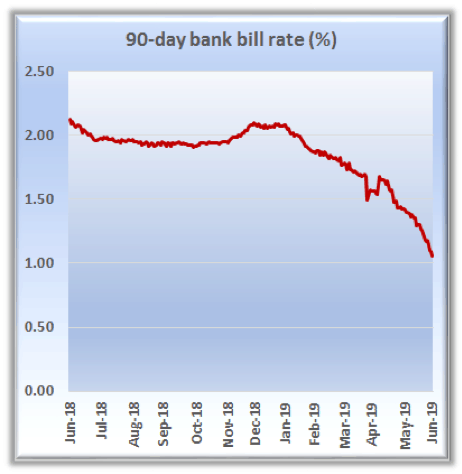
It’s a totally understandable response that investors would throw their hands in the air, give up on cash and term deposits as an investment and look elsewhere for “safe yields”. Understandable but dangerous. It is worthwhile re-visiting the role of cash in an investment portfolio.
As we’ve often said, it is not the role of cash to provide stellar returns, it’s to provide protection against the impact of downturns in the markets for risk assets. Cash is the cheapest, simplest, most effective means of insuring against loss, and in that respect it’s perhaps the most important component in the execution of portfolio diversification. The GFC was over ten years ago now so maybe memories are fading, but it was an excellent illustration of this point. Pretty much every asset class except cash got hammered – cash is the one thing that held up under severe stress.
Sure it would be nice to get 5% instead of 1% on cash deposits, but that’s not the point. Particularly for retirees wanting to draw a steady (or rising) income from their nest egg, the damage caused by suffering a large drop in an overly risky portfolio is far more devastating than the opportunity cost of accepting a low rate for the safety cash provides to the appropriate proportion of their portfolio. Again the GFC is a poignant if now distant reminder of that. And there will be another one. Notwithstanding the odd recent tremor, the unusual thing is that there has not been a major market correction for some time.
And it’s also interesting to note that on average cash has in fact outperformed shares roughly three years in ten. And not just in times when interest rates are high. Actually the last time was calendar year 2018, when interest rates were barely above 2 per cent – and the stock market went backwards.
One further point for good measure – one which no investor really wants to hear but it’s the harsh reality. Falling interest rates mean we investors must temper our return expectations. It’s there in the enunciation of the portfolios’ targets – 90-day bank bill rate + 1%, 3% or 4% respectively. Those margins represent the incremental returns that taking risk with some portion of the portfolio is meant to provide over and above the safe cash rate.
Targeting 5% when safe rates are 2% means taking similar risk to targeting 8% when cash rates are 5%. They’re the cold, hard facts of life in this business and can’t be manipulated. In the GFC it was the so-called “low” or “moderate” risk assets that did the most damage. They were supposed to be a high yield alternative to cash but with low risk – a song we’re hearing being sung more and more now as cash rates fall. But their defensive characteristics went missing just when they were needed the most, and they fell as hard as shares did when the chips were down. Cash won’t do that.
And?
Just so it’s not all Dr. Doom stuff, we’ve also often said cash’s other role is to be available when investing opportunities arise. As it happens, an interesting scenario has evolved of which we are taking advantage.
By way of background, one of the mechanisms we use to assess relative value in investment markets involves a method of estimating future returns based on three criteria:
- Current income yield (e.g. dividends)
- Forecast earnings growth
- Current price, and whether that is below or above long term averages for that market and likely to revert.
To cut a long story short, using this forecast and comparing it with the current cash rate gives an idea as to whether that market is cheap or expensive, at various price levels.
An extract for a couple of key investment markets is represented below:
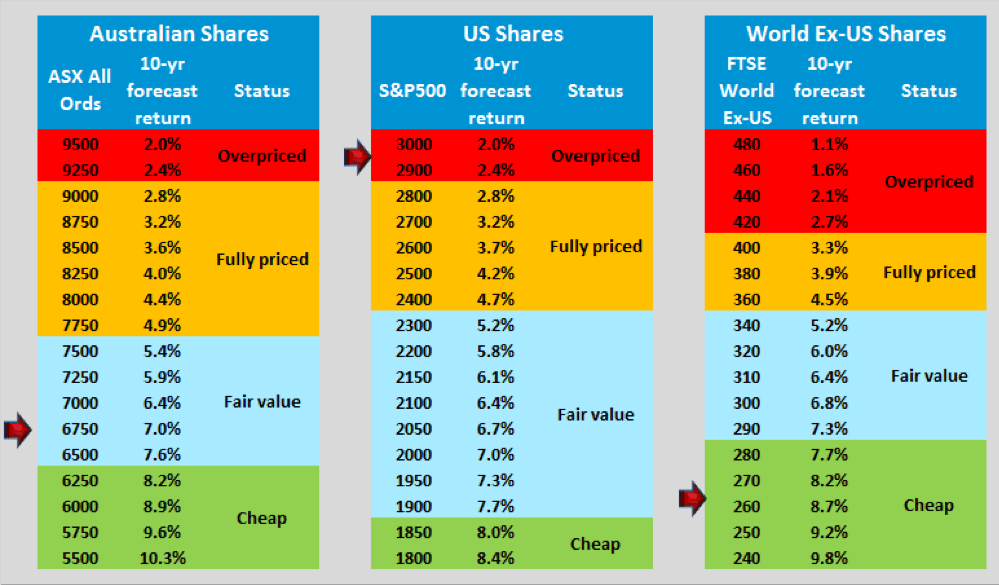
To explain:
- If something is in the “Overpriced” range you are looking at returns no better than a safe term deposit – why take a risk to achieve that? You certainly don’t want to buy in at those prices, and should be strongly considering divesting any such assets that you do own.
- At “Fair Value” you can anticipate a reasonable return for the risk being taken, and should be holding somewhere around your normal target weight for that asset class.
- “Cheap” represents a buying opportunity, with forecast returns well above the safe rate.
The arrows show where each of these major stock markets is positioned at the end of June according to this method.
As a result, with respect to Australian shares, each of the ARA portfolios holds marginally more than the normal target exposure to Aussie shares.
Looking internationally, for a long time we have been very much underweight in global shares, largely on the perception of the US being overpriced. The table above would support that view. But continued advances in the US and underperformance elsewhere has created a situation of apparent good value in global markets excluding America.
Fortuitously there is now a listed managed fund (or ETF) from fund manager Vanguard that allows us to pursue this opportunity, and we are building a position in all three portfolios via this Vanguard Ex-US ETF.
Of course there are no guarantees in any of this, and the forecast returns in the table are long term averages that do not rule out the possibility of short term fluctuations. But the principle of buying cheap and not holding expensive assets seems entirely logical and this approach is an attempt to tilt the odds in our favour in this way.
So, who’s got what?
The table below shows the ARAIF’s investments at the time of writing. Please note, the percentages refer to the proportion of each portfolio allocated to that investment, not its rate of return.
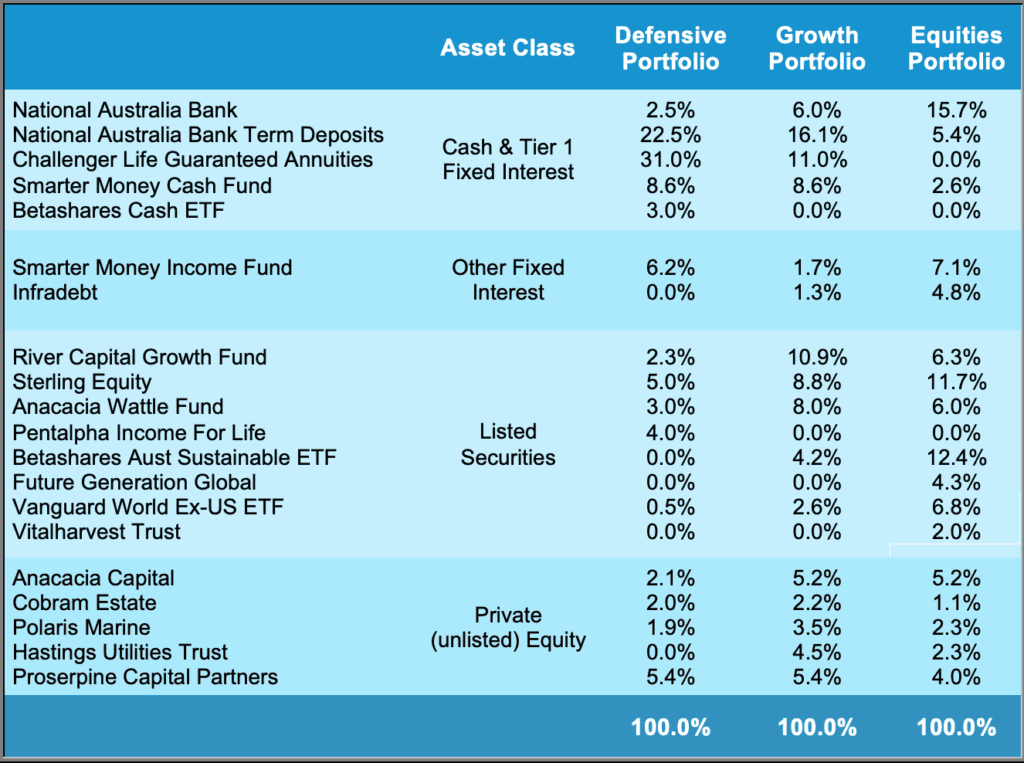
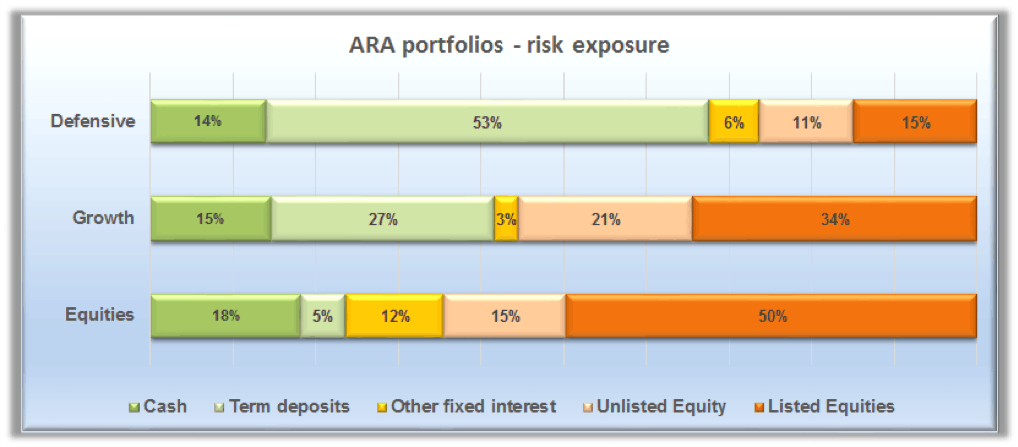
Major Holdings
Apart from bank deposits and other interest-bearing accounts, the Fund invests in a range of assets through the fund managers listed in the table above. If we drill through to the assets selected and overseen by those managers, there are in fact over a hundred individual securities providing diversification of risk and exposure to a wide range of opportunities.
The table below shows the 20 largest individual holdings and what proportion of each portfolio they represent. These are the investments that will have the biggest impact on the return of your portfolio.
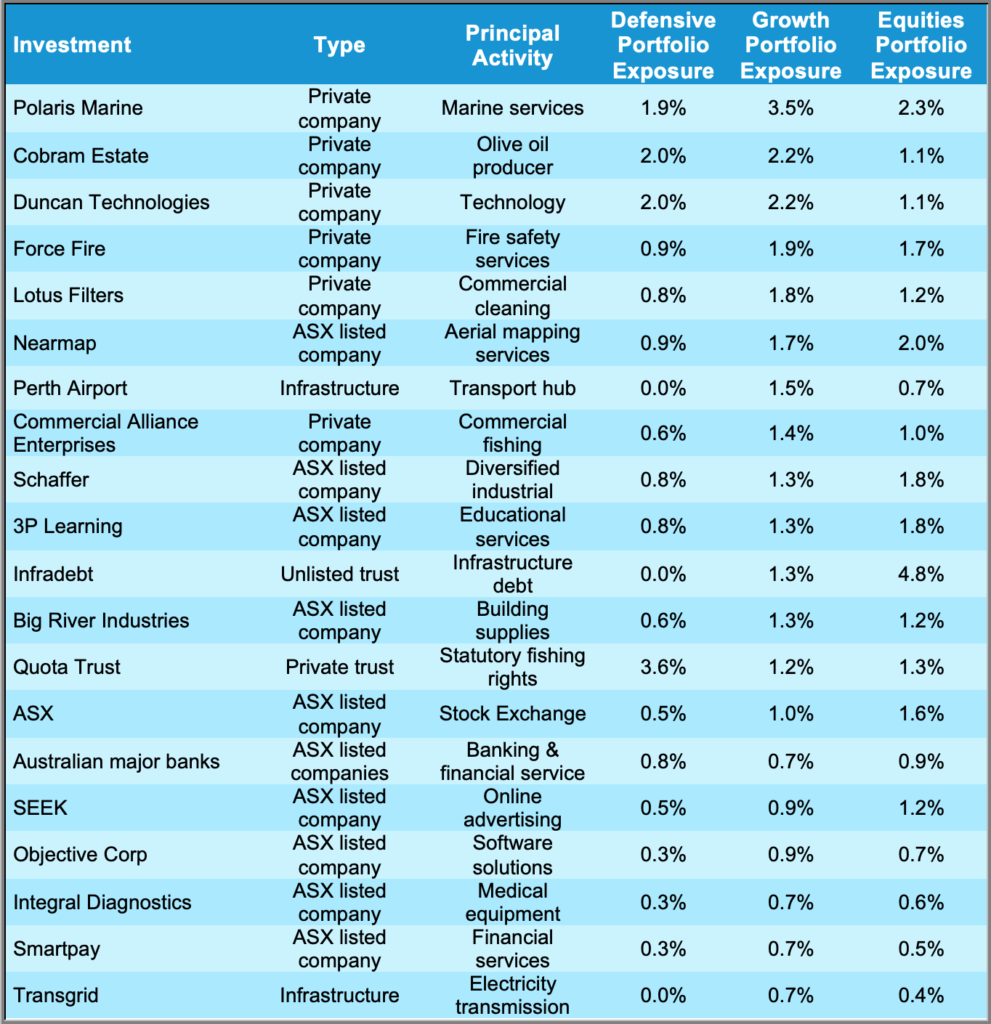
Here to Help
Not surprisingly, the investment funds, their returns, risk, long term outlook and their role in achieving clients’ future financial goals are a major talking point in our interaction with clients year-to-year. But a real fun part of this job is when, through our understanding of the person and their unique situation, we are able to add tangible value in ways that are not obvious nor well-known in the great wide world.
A case in point. It is not widely understood that in Victoria those in receipt of Centrelink payments are eligible for a discount on the stamp duty which applies on residential property transactions. It is rare that the various parties involved in the transaction – agents, solicitors, conveyancers etc. – actually tell people about this. In fact one conveyancing lawyer specifically told one of our clients (erroneously!) that they were ineligible and not to bother applying. And of course the government agency doesn’t come running after you to tell you about your entitlement.
As it happens though, we have now helped secure over $100,000 in stamp duty refunds for clients in recent times, money to which they had no idea they were entitled. Better than finding a $5 note in your jeans pocket before they go in the wash.

For the record, in Victoria those with Centrelink concession cards are entitled to stamp duty discounts on property purchases of up to $750,000 per cardholder (i.e. $750k for a single recipient or $1.5Mill if both partners are cardholders). It’s a one-time only concession and unique to Victoria, although some other states and territories have their own concession schemes.
One door opens …….
You may have met one or both of our paraplanners, Hugh Nguyen and William Cundawan. Sadly, both have chosen to move on and pursue career opportunities elsewhere – this despite the fact that Will comfortably leads the footy-tipping. We thank them for their efforts over the past two years and wish both guys well for their futures.
Which opens the door for our newest team member, Joel Kaithavelil, to take up a position in the adviser support team.

Joel has a Bachelor of Commerce degree with majors in accounting and financial planning, and brings four years of industry experience to his new role here. He is very keen to forge a long and successful career in the industry, and we’re very keen to see him succeed. Welcome Joel!
And a reminder
Regular web-users are no doubt on to this already, but a reminder that our new website is now up and live.

It’s fresh, friendly to all forms of hardware – phones, tablets, PCs – with the same investor functions as before. With the basic site now built and operating we look forward to greatly expanding its functionality and menu of client services.
ARA in the Community
ARA takes seriously its aspirations as a good corporate citizen. We provide ongoing sponsorship and support to a number of causes including:
- Arts Project Australia – which provides workshop and gallery facilities for artists with intellectual disabilities, and
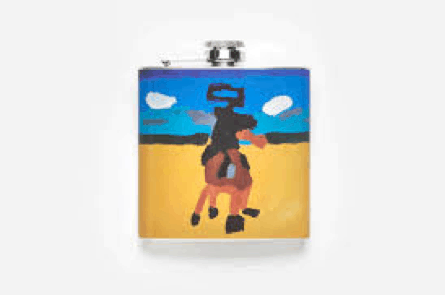
- The Male Bag Foundation – which raises funds primarily for the provision of prostate cancer treatment equipment to rural hospitals.
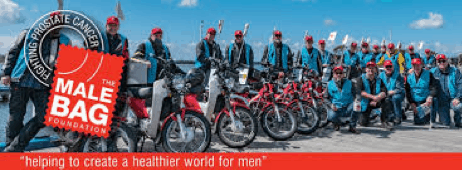
We also provide for staff to take up to three days paid leave a year should they wish to do volunteer work for appropriate causes.
Earlier this year Alan Rimmer took up the challenge with Oxfam, to complete a five-day, 80-kilometre trek through the Sapa Valley in North Vietnam.
Alan was careful to note: “They call it a valley, but they don’t fool me. Where there are valleys, there are mountains” – and there were! Big ones. Furthermore, while the temperatures were expected to be low-to-mid twenties with high humidity, they were in fact mid-to-high thirties – with high humidity.
But all went well, it was a great experience, and thanks to the generous support of a number of our key suppliers as well as ARA, Alan raised over $13,000 and the trekkers in total nearly $150,000, to support Oxfam’s projects in the region – designed to fight poverty through the economic empowerment of local communities.
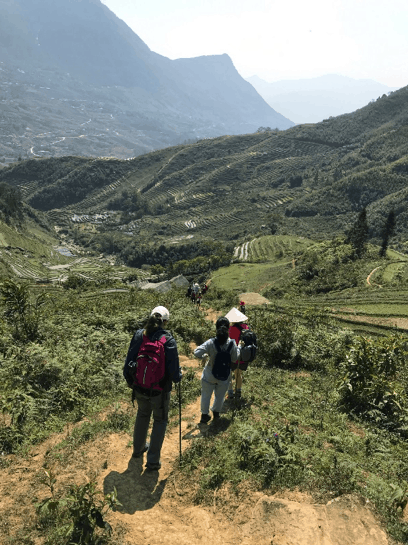
Morning teas for a cause
And our latest initiative caters to two of our favourite things in life – helping people, and cake!
Four times a year a small team of our staff puts on morning tea for everyone, and nominates a cause that they deem worthy of support. At the morning tea they make a presentation concerning the chosen organisation.
At the last session the team chose to highlight the work of Very Special Kids – an organisation which supports families caring for children with life-threatening conditions. Not only was this unanimously accepted as a worthy cause, there weren’t too many dry eyes in the house.

Through the voluntary contributions of staff and a donation by ARA we raised well in excess of $2,000 for Very Special Kids.
And had enough cake to last for the rest of the week!
